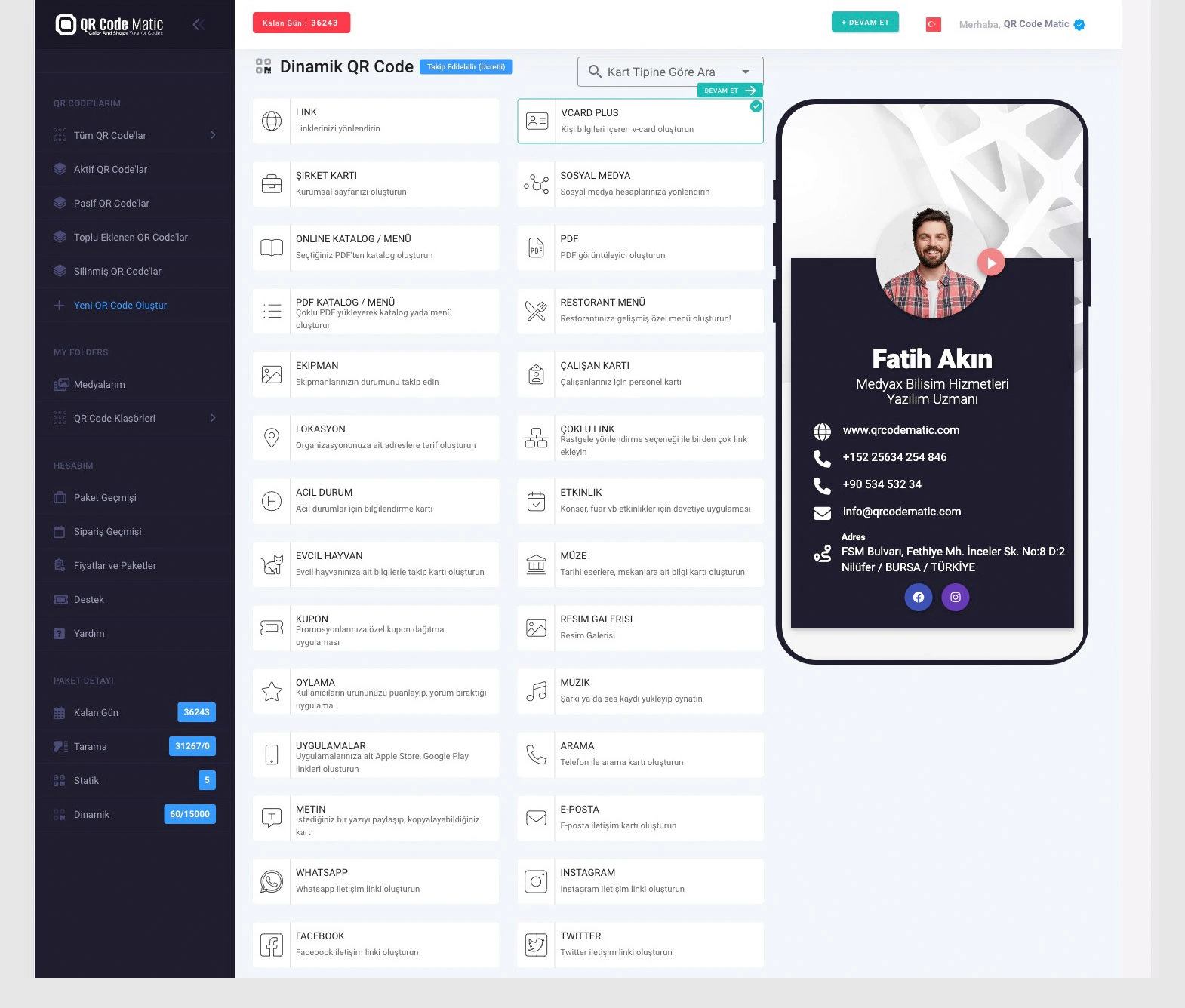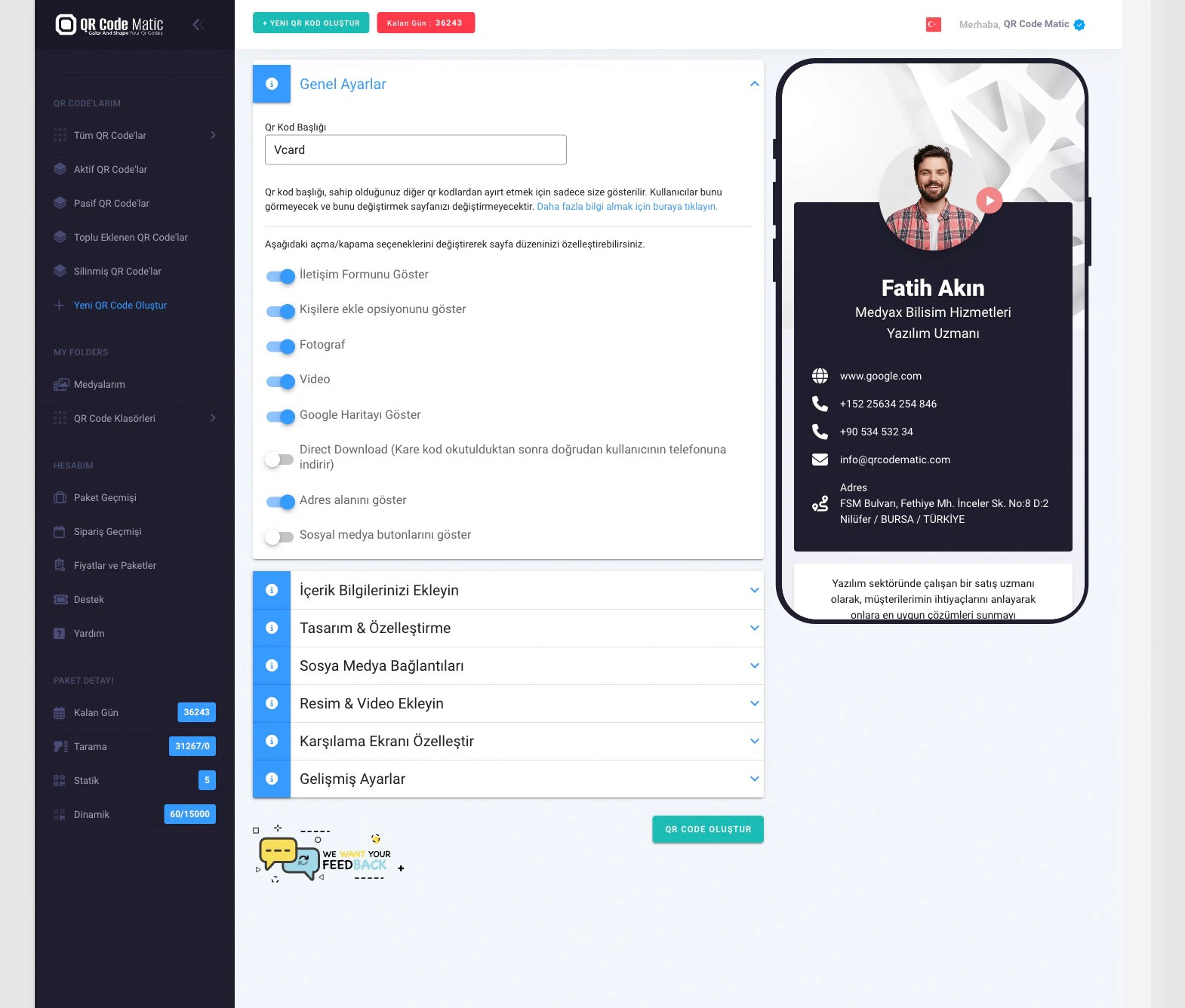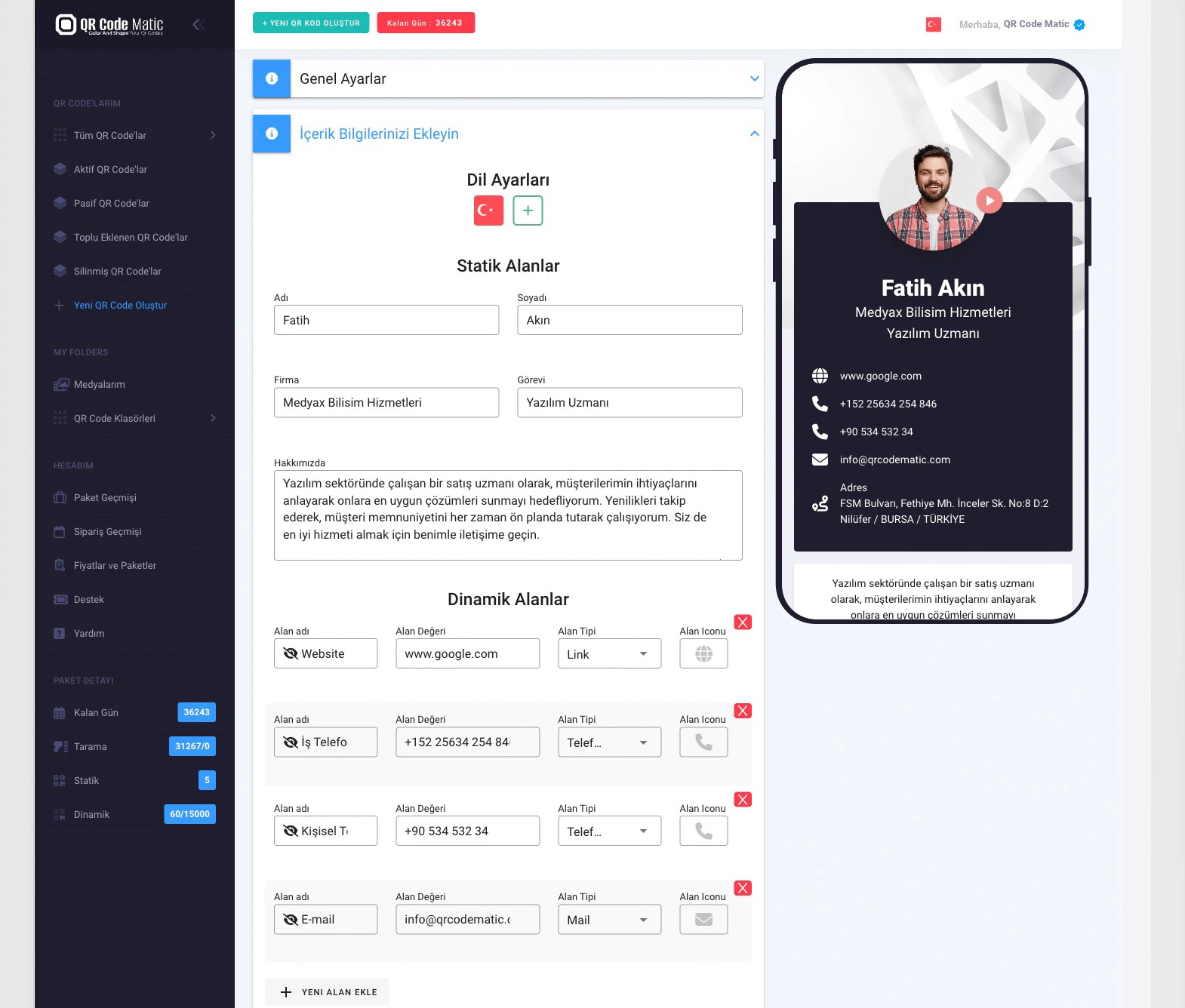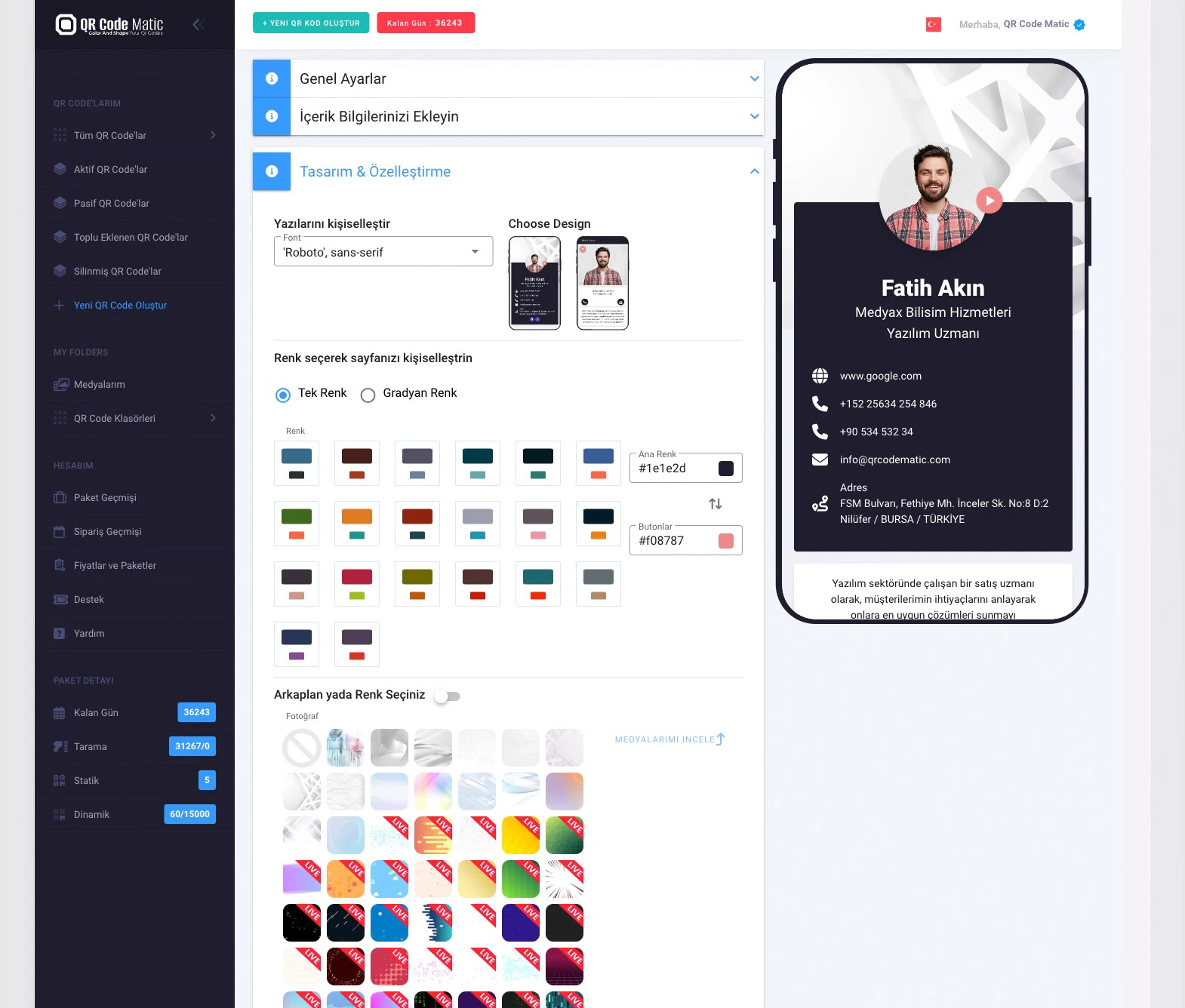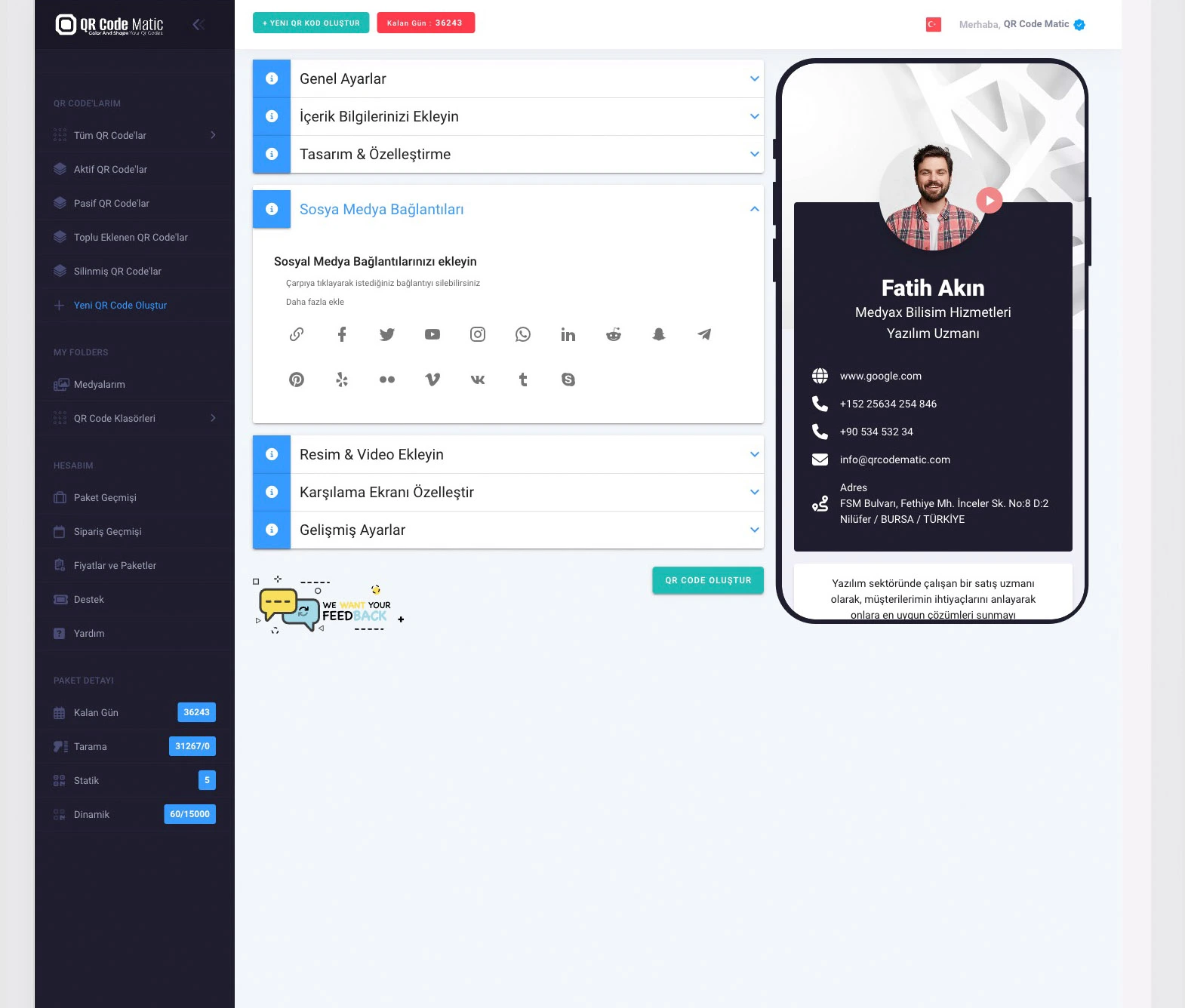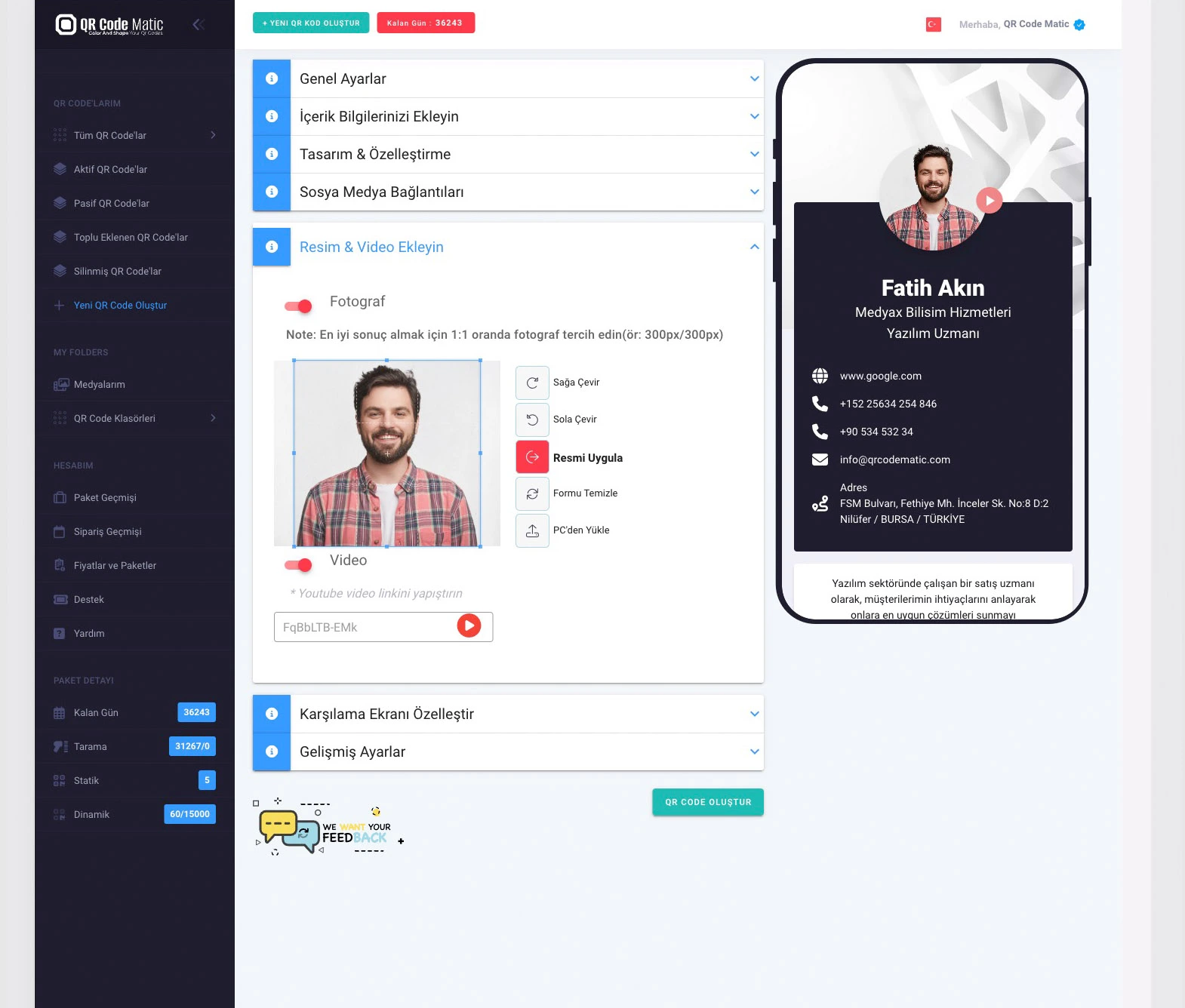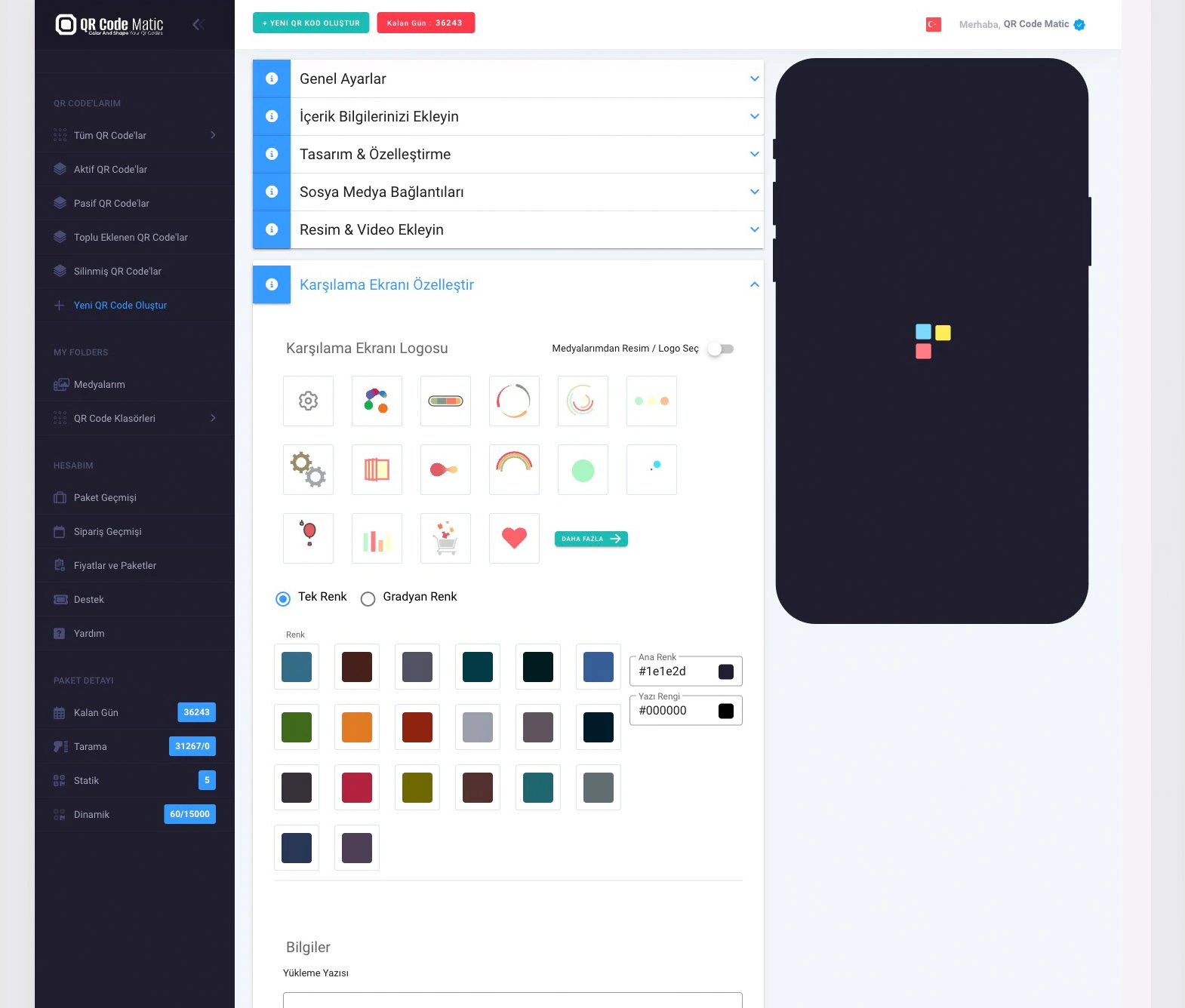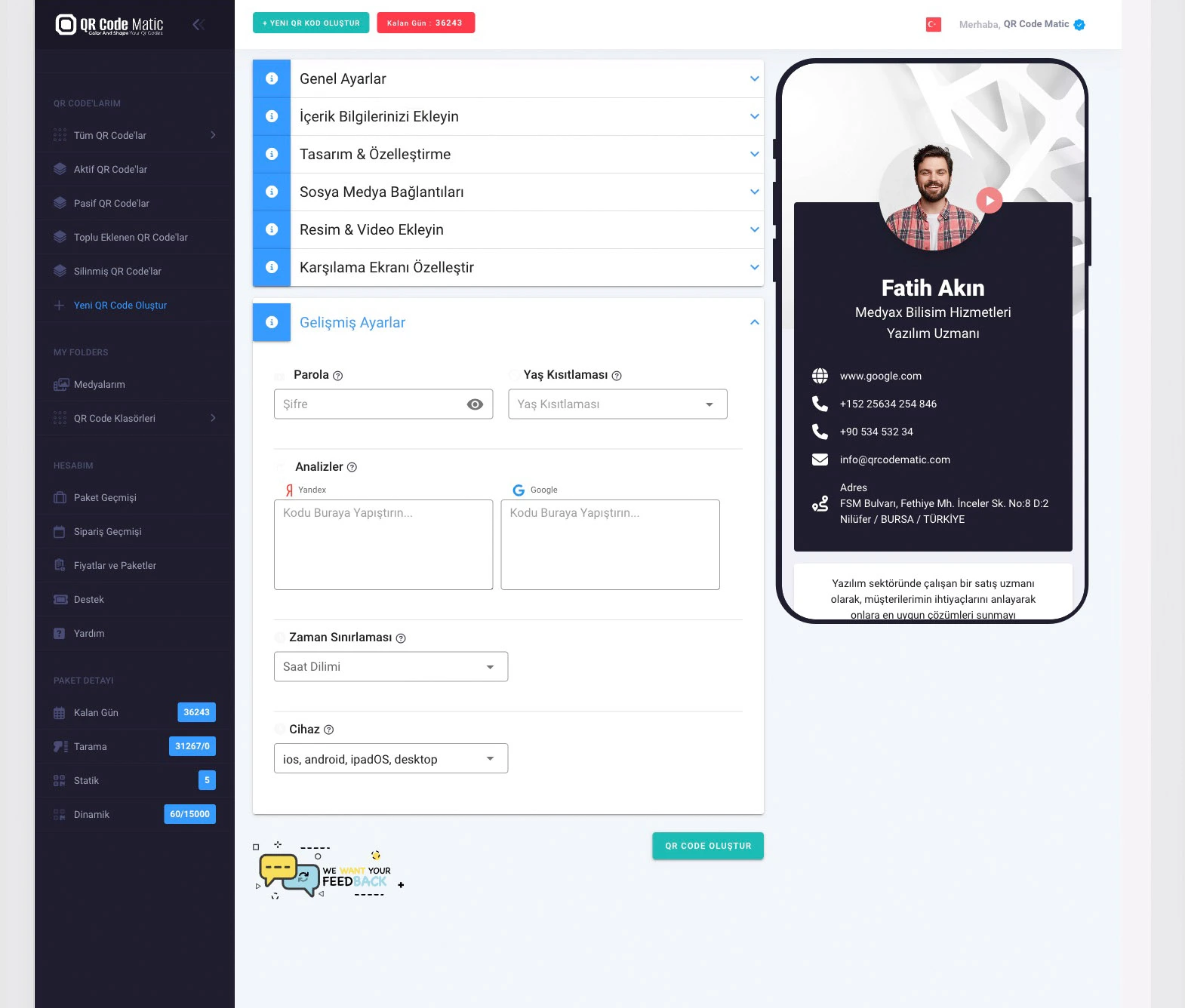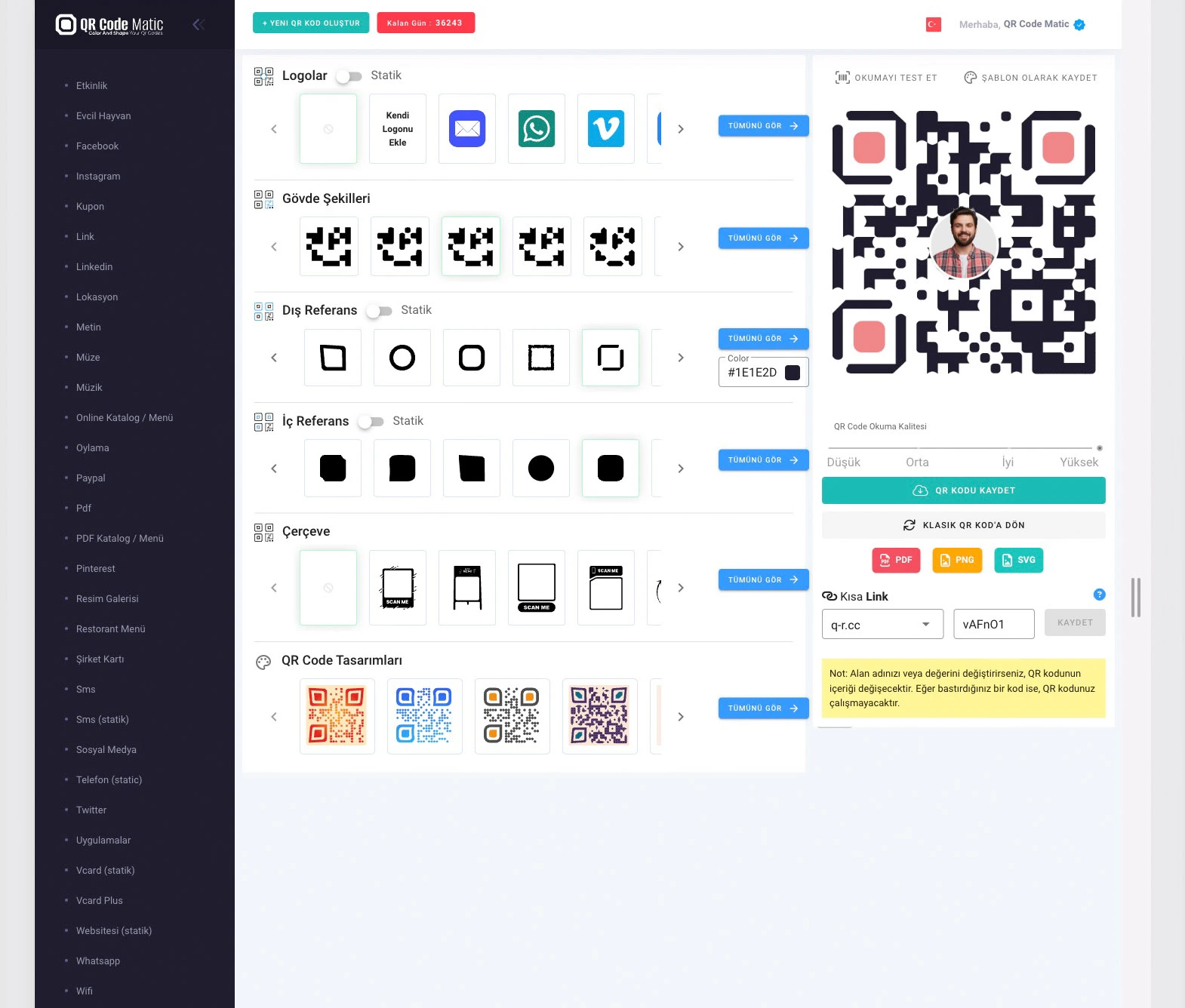QR codes have become an increasingly popular trend in the use of surveys. QR codes offer many advantages for businesses and survey creators, as well as convenience for users.
The use of QR codes in surveys is an effective method. Here are the benefits of using QR codes in surveys:
Easy Access: QR codes provide quick and easy access to surveys. Participants can simply scan the QR code using their mobile device's camera and instantly access the survey. This increases survey participation and saves time.
Mobile Compatibility: QR codes are easily scannable on mobile devices, making it convenient for participants to engage in surveys. Since most people carry their mobile devices with them at all times, using QR codes can boost participation rates.
Interactive Experience: QR codes add an interactive element to surveys. For example, if you're conducting a survey about a product, participants who scan the QR code can view product photos or videos and be directed to obtain more information about the product.
Multilingual Support: QR codes facilitate access to surveys in different languages. Each QR code can represent a survey in a different language, directing participants to their preferred language. This allows the survey to reach a wider audience.
Targeted Participation: QR codes can be used to encourage specific target groups to participate in surveys. For example, if you're organizing an event, you can place QR codes at the venue to collect feedback exclusively from event attendees.
Instant Result Viewing: QR codes enable participants to view survey results instantly. After completing the survey, participants can view the results in their browser or receive a real-time notification. This expedites the feedback process and allows for immediate analysis of survey results.
Data Collection and Analysis: QR codes facilitate data collection and analysis in surveys. Each QR code uniquely identifies participants or survey responses, allowing you to collect and analyze data in a more organized manner.
Participant Motivation: QR codes can provide motivation for survey participants. For instance, you can offer rewards or discounts to participants who scan the QR code and complete the survey. This incentivizes participants to complete the survey and increases response rates.
Data Security: QR codes play a significant role in ensuring data security in surveys. QR codes direct survey responses directly to mobile devices, enhancing data security. Additionally, you can make QR codes time-limited, ensuring the protection of your data.
Trackability: QR codes enable tracking of surveys. With each QR code uniquely identified, it becomes easier to track and analyze which participants completed which surveys. This is beneficial for segmenting responses among specific demographic or behavioral groups and conducting more effective analysis.
The use of QR codes in surveys offers many benefits for both researchers and participants. It provides advantages such as easy access, mobile compatibility, interactive experience, multilingual support, targeted participation, instant result viewing, data collection and analysis, participant motivation, data security, and trackability. By making surveys more accessible, efficient, and interactive, QR codes can enhance the success of your research endeavors.
